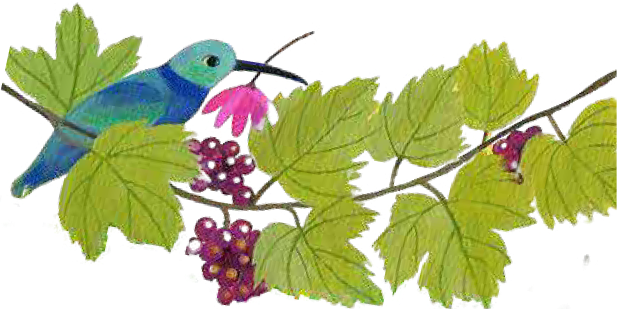Book your visit
We grow around 35 hectares of vineyards within the Montalcino borderlines but divided between two different slopes: East and West. It all started in Castelnuovo dell’Abate, on the east, a unique place within the abundant Montalcino area, and over here it still seems as if nature and culture had diversified even more creating something that we don’t yet fully understand to this day!
Here for centuries the cultivation of the olive tree, more specifically of the Olivastra Seggianese, has marked the time of men in the fields. Under the shadow of the extinct volcano Amiata, entire generations have dedicated themselves to the subsistence and care of these centuries-old olive trees.
Here the presence of the Amiata is perceived through the gusts of wind that channel between the mountain and the rivers and the clouds that rush quickly towards the mountain top, sometimes leaving us dry but other times saving us from the violence of the rain showers at the end of summer.
Even the soil in Castelnuovo has a flavor of its own. Here the emerging seabed was violently thrown both up and down through a series of landslides, explosions and earthquakes that we still struggle to explain to this day. Someone credits the genesis of these lands to the thermal waters and their energy, someone else to the volcano that settled; well, whoever the author was, she definitely had fun sculpting these mosaics of landscapes.
On the east side, it dawns early in the morning and almost every day air currents are channeled here between the Mount Amiata and the Montalcino ridge. The soils have a very high clay and silt content, these are lands of oceanic origins, rich in active limestone. The high pH is harsh and the salinity of the soil can complicate things.
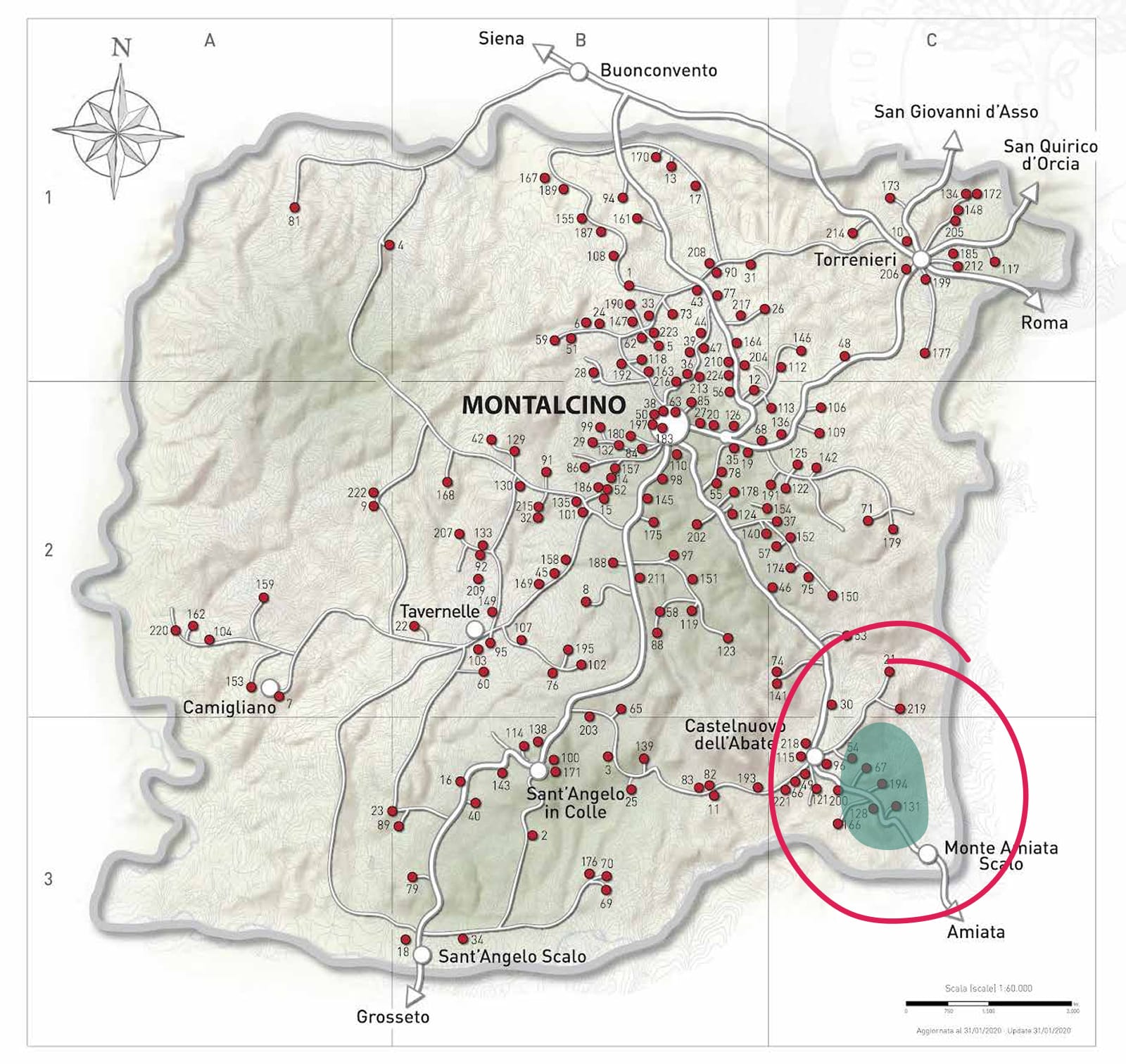

east
But this type of terroir can supply to the Sangiovese a unique depth and stratification, especially if combined with a light hand capable of transforming the exuberance of a warm and sunny area into weightless density.
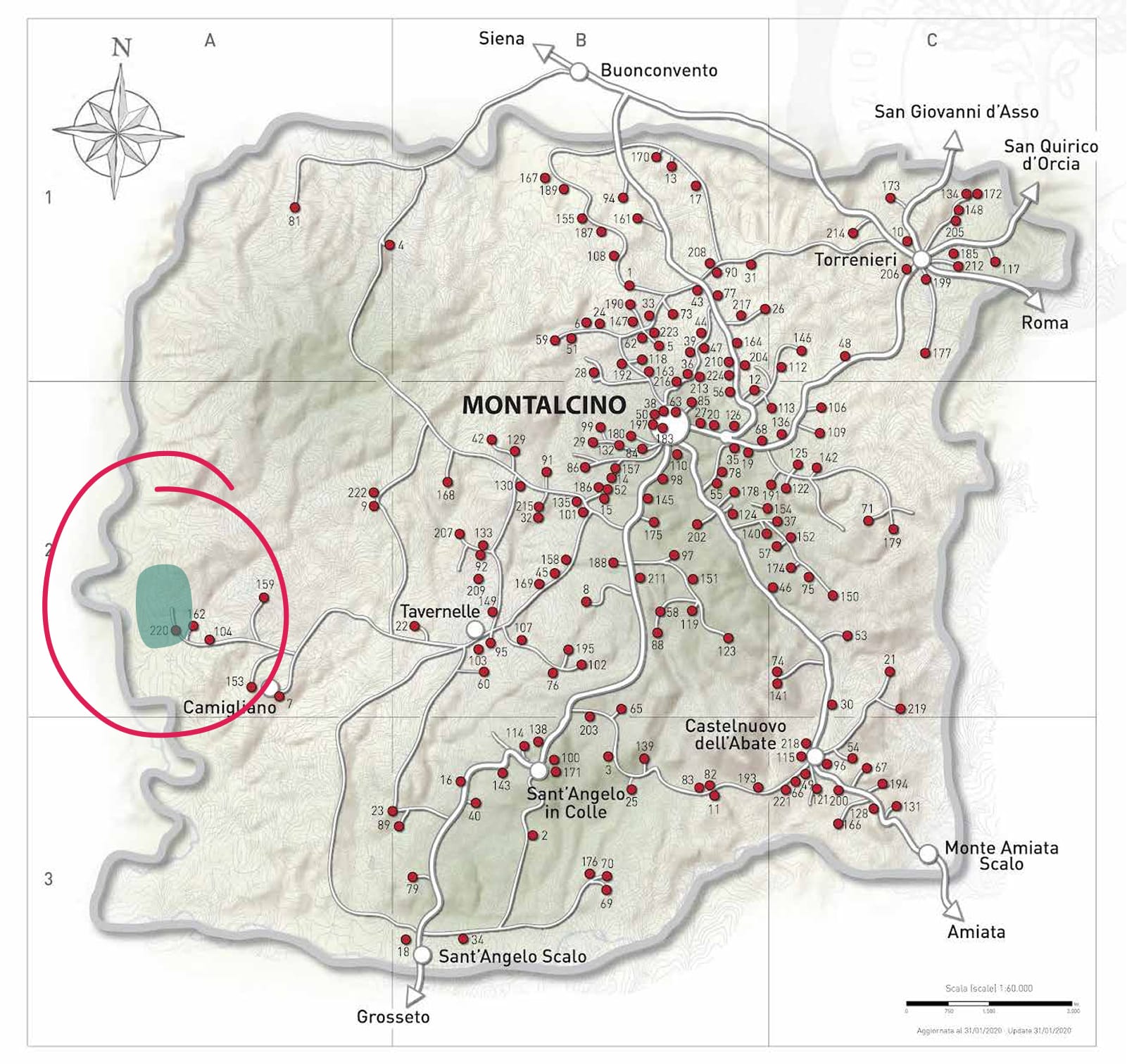
On the Western side, the landscape transforms into a typical medium-high forest, which extends for hundreds of kilometers thus isolating our vineyards!
The orographic lines here are no longer made of steps and gullies but of lake bends and terraces, shaped by the movements of the Ombrone river and by the dejection cones from which the eroded debris has poured.
The sunlight comes out in the afternoon, the climate tends to be more humid and cooler and the air smells of undergrowth.
Here the geological compounds are very heterogeneous and influenced by the erosive phenomena originating from the course of the river and the washed-out slopes above us.
This condition gives rise to an alluvial mix, quite loose and deep, dominated by clay and sand, enriched by various draining rocky materials (alberese, galestri, Tuscan boulder). This side helps us in warmer vintages, with more diluted fruit and often dedicated to the production of wines Sogni e Follia and Cielo D’Ulisse.
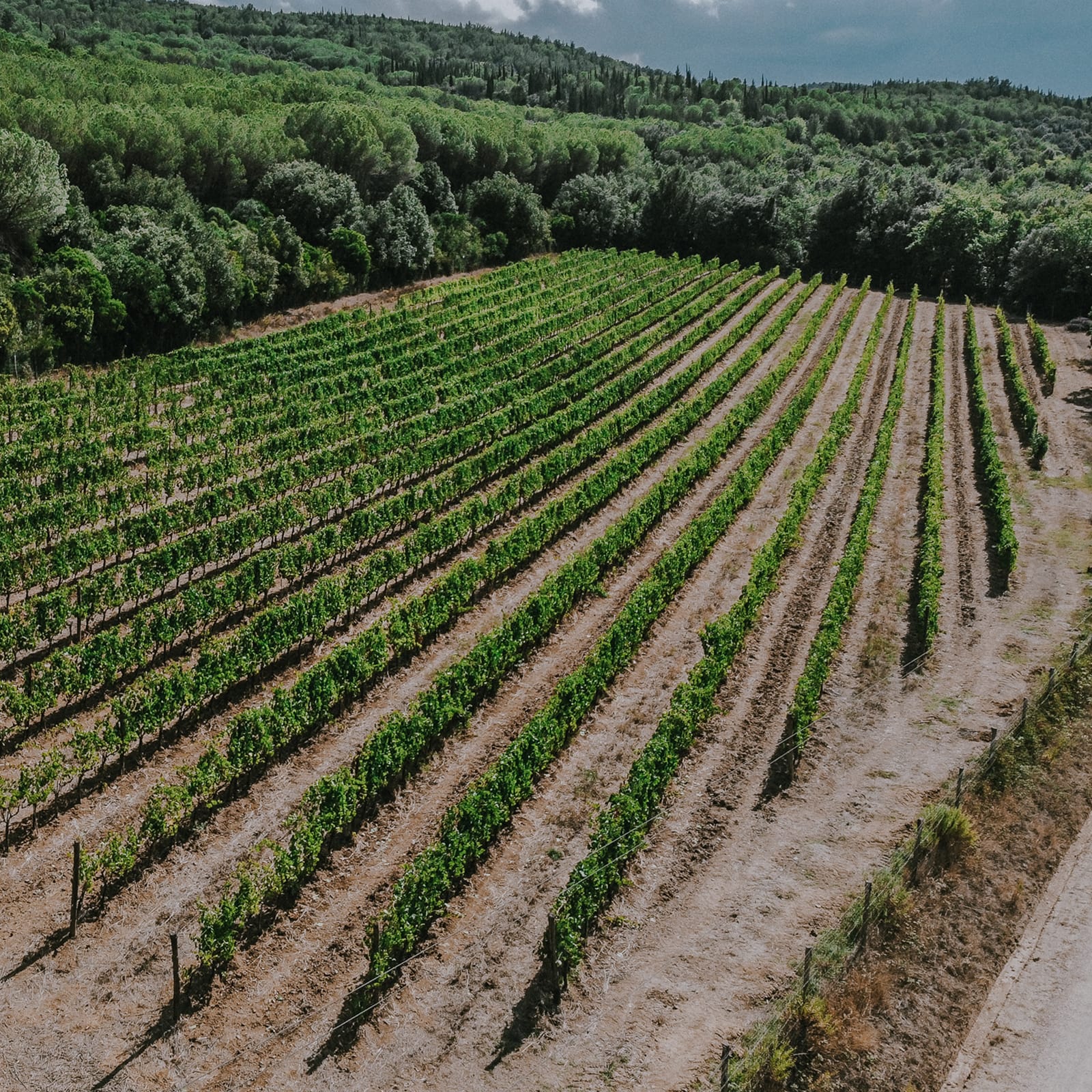
west
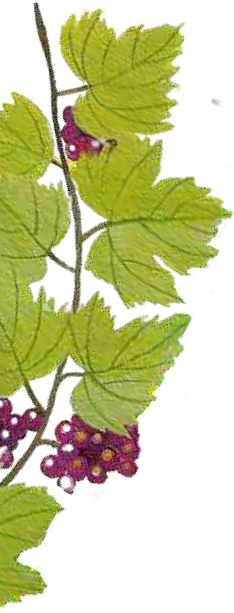
To date we have a total of 1.4 hectares of Sangiovese Bonsai, with adult plants producing approximately 200g of grapes each. From the first ever harvest to now, we can say that we have created something truly unique, which we are all very fond of. For us this was also a research project, on several occasions we examined the soil profile in depth to understand the behavior of the root system.
The roots reach three meters deep, about double the depth of a regularly planted vineyard, which is certainly an encouraging sign.
In our view, this wine is first of all a Sangiovese from Montalcino, and beyond the particular work it requires in the vineyard, we will continue studying this type of system and vinify the grapes without blending them, because the visual uniqueness, evident when visiting the vineyard , is completely met in the sip and we would never be able to call it anything other than “Bonsai”.
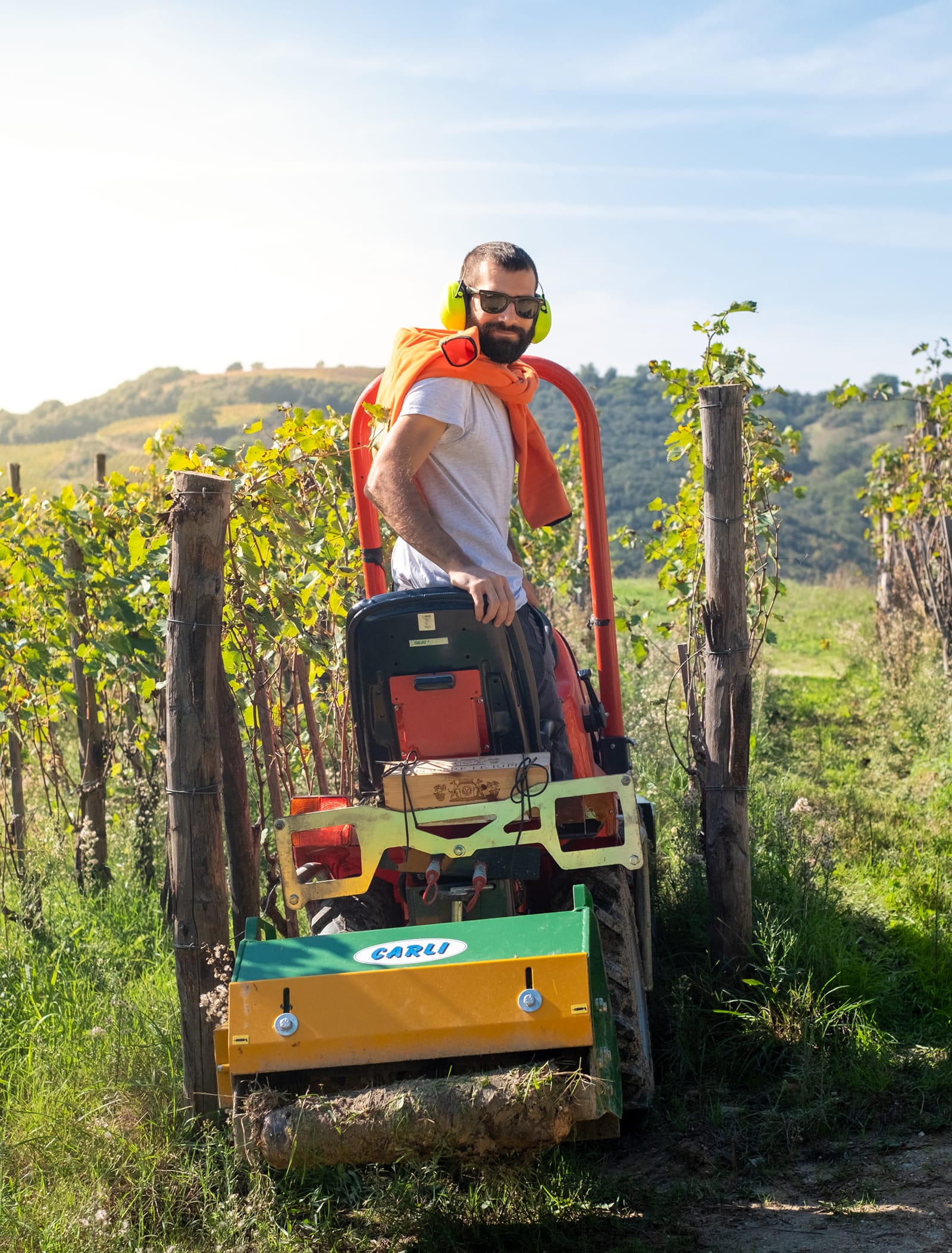
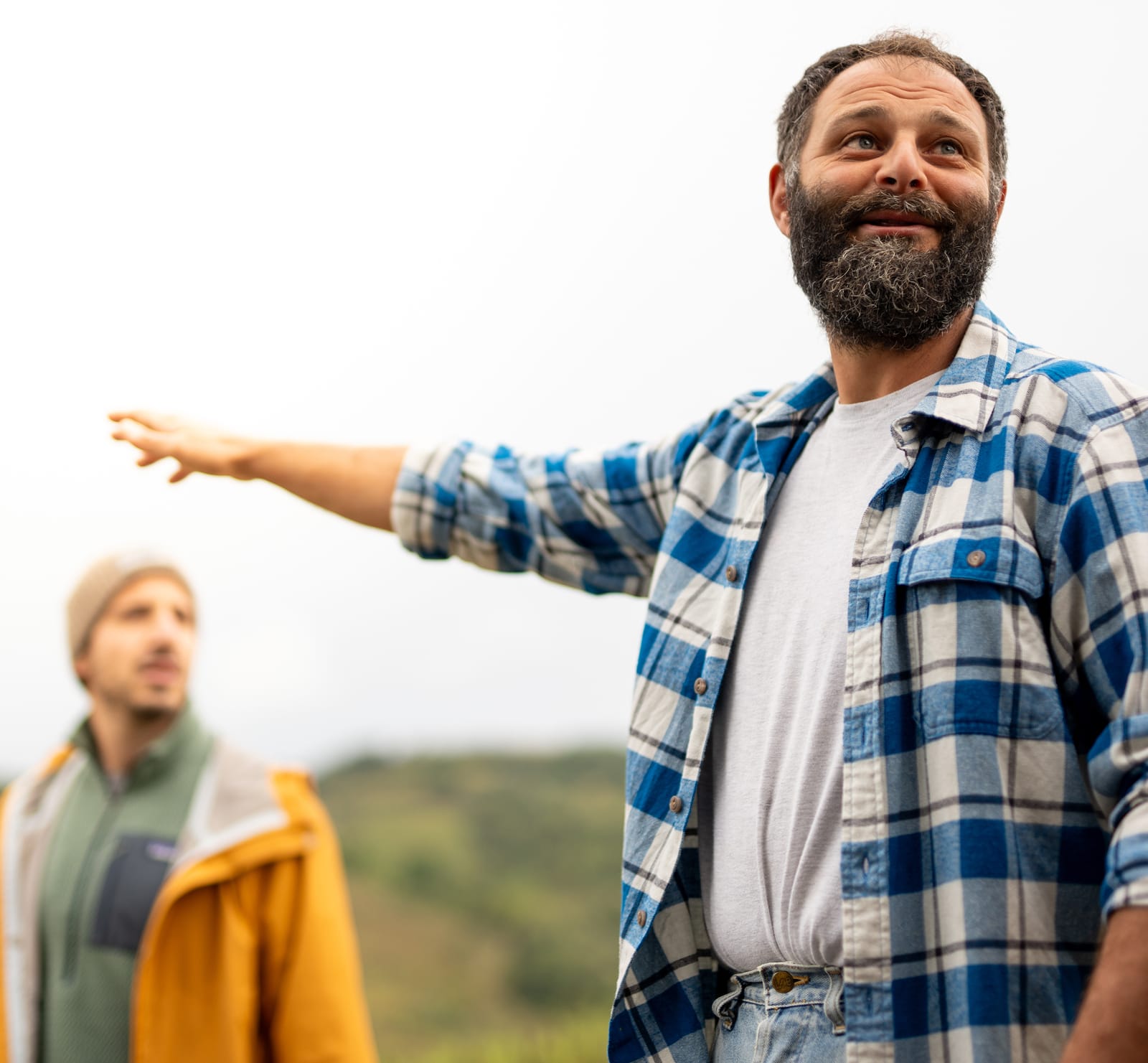
Over time, we have developed specific systems for this very particular vineyard.
Following the example of the vines that were able to adapt to very different conditions, we too had to do the same.
In regards to the pruning, we understood that it was useless to expect a grape production quantity comparable to a standard vineyard, the effort made by the plant was already burdensome and therefore, with pruning, we identified a reduced load of buds, setting a sapling 40-50 cm from the ground with a single spur with 2 to 3 productive buds.
Production varies from year to year, some plants sometimes do not produce bunches due to unfavorable seasonal trends, but usually we harvest 1 maximum 2 small bunches per plant.
The state of health of the soil has been the main stumbling block right from the start. Our soils are mainly clay and silt, therefore they compact easily and are difficult to structure.
Such a dense vineyard requires a replenishment of abundant organic substance every year, through hand-distributed manure and decompaction for at least the first 30 cm of soil.
After that, we make a substantial bed of straw to mulch to protect the water resource and to reduce compaction, all without forgetting the biodynamic preparations.
